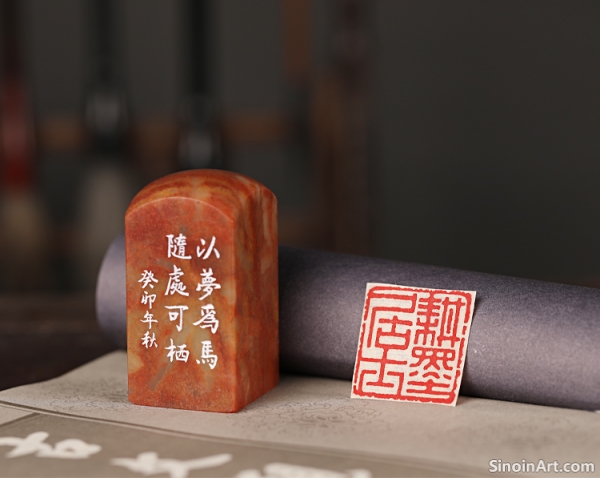The Symbolism in Seals: Decoding Meaning Through Design
|
Chinese seals are more than just a signature or a stamp; they are often imbued with symbolic meaning, reflecting the values, beliefs, and aspirations of the artists and owners. Understanding the symbolism within seal carving can add a deeper dimension to the appreciation of this traditional art form. The symbolism often reflects personal beliefs and cultural values. The messages embedded in the design require careful interpretation and understanding.  The characters used in seal carving are often chosen for their symbolic meaning. For instance, characters representing longevity, prosperity, or good fortune are frequently used on seals. Certain characters are often associated with luck and prosperity. This selection of characters reflects common values.  The use of specific imagery is common on seals, with different motifs carrying different symbolic significance. Dragons, for example, represent power and authority, while phoenixes symbolize rebirth and good fortune. These visual elements are also key to understanding the message of the work. Their incorporation is an indication of the message.  The way characters are arranged on the seal can also be symbolic. The use of symmetry or asymmetry, the use of positive and negative space, and the use of particular design elements can all contribute to the symbolic meaning of the seal. The structure of the seal can be as important as the characters themselves. The color of the ink used for impressions can also carry symbolic meaning. Vermilion, the traditional red color used for Chinese seals, represents joy, prosperity, and good fortune. Color choices can alter the overall impact and message. The material from which the seal is made may also be symbolic. Jade, for instance, has long been associated with power, purity, and spiritual significance, while other materials like wood or soapstone may carry different connotations. The choice of material can be as significant as the design. In essence, the symbolism found in Chinese seals is a rich and complex language, reflecting the depth of Chinese culture and artistic expression. Understanding these symbolic elements allows viewers to appreciate the seals not only as works of art, but also as profound expressions of meaning and cultural values. |
Tag : Seal Symbolism, Chinese Art Meaning, Symbolic Motifs, Seal Design, Cultural Interpretation
Related information
- The Historical Evolution of Name Seals: From Ancient Origins to Modern Practice
- The Use of Name Seals in Art and Calligraphy: Authentication and Expression
- Inscriptions on Leisure Seals: Reflecting Personal Philosophies
- The World of Collector's Seals: An Introduction to Shoucang Yinzhang
- Seal Carving Around the World: Cross-Cultural Influences
This article traces the historical development of name seals in China, from their early origins to their continued practice in modern times, highlighting key changes and developments in their design and usage.
This article discusses the different ways name seals are used in Chinese painting and calligraphy, serving as both a mark of authentication and an integral part of the artwork’s overall aesthetic.
This article explores the diverse types of inscriptions found on leisure seals, examining their philosophical, literary, and personal meanings, and how they reveal the owner's inner world.
This article introduces the concept of Chinese collector's seals, exploring their historical role, cultural significance, and how they function as marks of ownership and connoisseurship.
This article explores the global reach of Chinese seal carving, highlighting its influence on other cultures and the cross-cultural exchange that continues to shape its evolution.